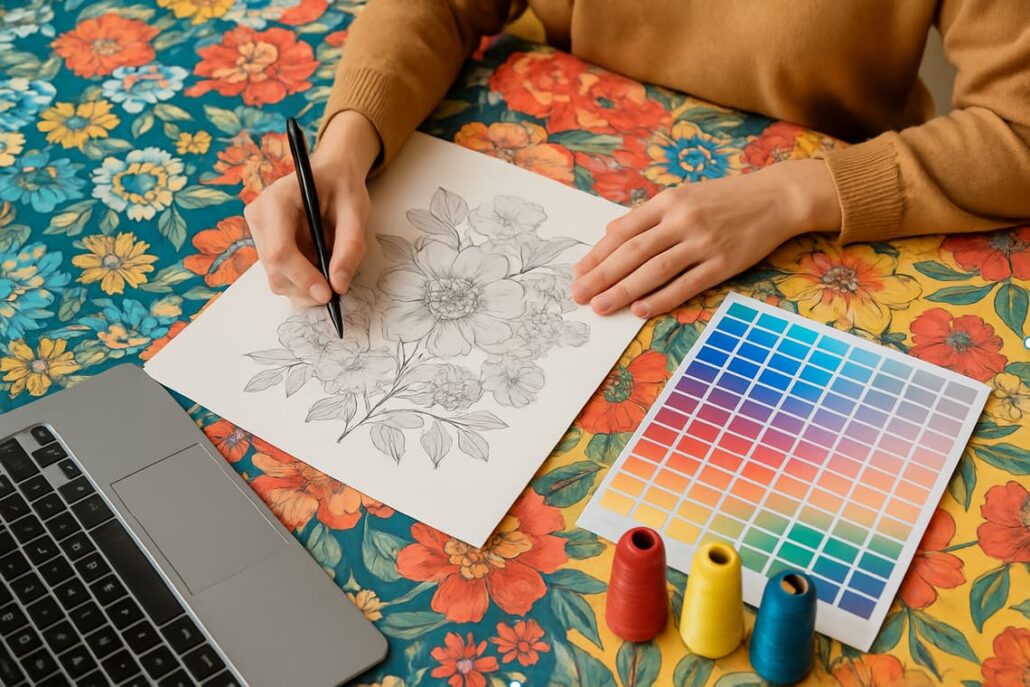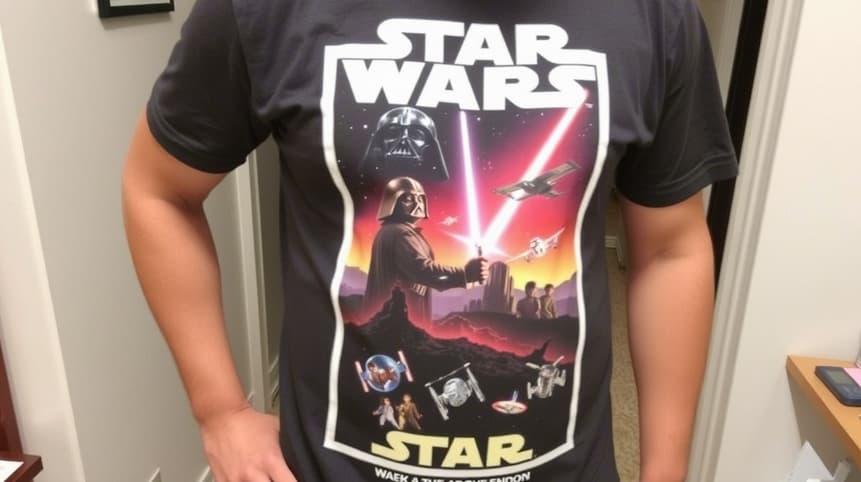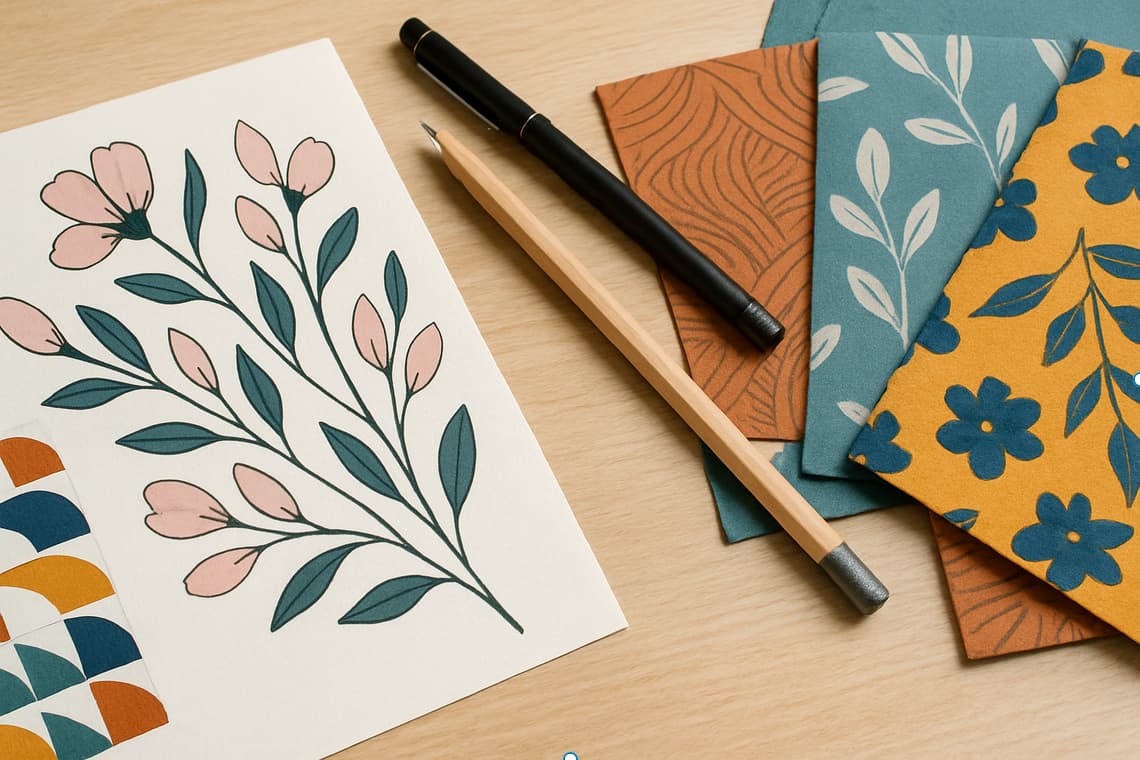Textile print design is an art form that breathes life into fabrics. It’s not just about creating beautiful patterns — it’s about translating ideas, emotions, and stories onto surfaces that people wear, touch, and live with every day. Whether you’re designing for high fashion, casual wear, or accessories, mastering the skills behind print creation is essential for any modern designer.
We offer a comprehensive journey into the world of textile prints, combining theory with hands-on practical exercises. Our courses are crafted to build your expertise in composition, texture creation, color management, and adapting designs across a wide range of products — from elegant dresses to stylish sneakers.
Here’s a closer look at what it truly means to become a master of textile print design.
The Foundation: Composition of Textile Prints
Every successful print starts with strong composition. This involves much more than placing a few elements together; it’s about understanding how shapes, lines, and spaces interact to create harmony and flow across a fabric.
In our lectures, we explore how to develop industrial patterns suitable for various production methods — from screen printing and digital printing to weaving and working with nonwoven materials. Students learn how repetition, scale, and rhythm influence the aesthetic and technical success of a textile design.

Practical exercises include creating pattern repeats, experimenting with modular design techniques, and solving real-world composition challenges that arise in manufacturing.
A well-composed textile print doesn’t just look good — it feels balanced, functional, and ready for mass production.
Texture: Adding Depth and Style
Texture gives life to prints. A flat, one-dimensional pattern might be aesthetically pleasing, but a design with texture draws the eye, evokes emotion, and adds a tangible sense of depth.
Our course teaches you how to develop and apply different types of textures — from rough, hand-drawn effects to sophisticated, digital treatments. You will learn how to:
- Create textures that enhance pattern motifs
- Integrate texture seamlessly into the background or main elements
- Use contrast in texture to emphasize key parts of your design
Whether you’re designing floral prints for silk scarves or geometric patterns for denim, mastering texture is essential to creating stylish, memorable textiles.
The Power of Color: Emotional Impact and Harmony
Color is one of the most powerful tools at a designer’s disposal. It can change the entire mood of a print, influence customer perception, and even impact purchasing decisions.
Our coloristics and color theory modules teach you:
- How to build harmonious color palettes
- The psychology behind color choices
- How to adjust color schemes for different fabrics and printing methods
- Tips for creating impactful monochromatic or multicolored designs
Through lectures and practical exercises, you’ll discover how color influences emotional response and how different combinations can make a design feel fresh, classic, bold, or understated.
And if you’re passionate about pop culture and visual storytelling, you’ll appreciate how color plays a crucial role even in poster art — just take a look at Star Wars posters, where color schemes dramatically affect the mood, energy, and narrative of each artwork. Such iconic visuals often inspire prints for T-shirts and casual wear, turning legendary posters into wearable art that resonates with fans worldwide.

In fact, designing T-shirt prints based on famous graphics like movie posters is a growing trend, combining nostalgia with modern streetwear culture.
The same principles you see in poster design — contrast, emotion, energy — are equally vital when developing powerful, memorable prints for fabric.
Understanding Form: How Prints Interact with Clothing
A great print design isn’t created in a vacuum — it must complement the fabric it adorns and the clothing it becomes part of.
We focus on the relationship between print and form:
- How large-scale prints behave on wide skirts vs. narrow blouses
- Why vertical or diagonal patterns can elongate or slim the silhouette
- How fabric type (flowy vs. stiff) influences the perception of the print
You will gain insight into how the placement of patterns can enhance or diminish the structure of a garment, and how thoughtful print design contributes to the success of an entire collection.
Designers must always consider how a print “moves” with the body and interacts with the folds, seams, and cuts of the fabric.
Beyond Clothing: Prints for Accessories and More
Textile prints aren’t limited to garments. Accessories like bags, shoes, tights, and T-shirts offer exciting new canvases for design exploration.
Our course also covers:
- Specific considerations when designing prints for non-traditional surfaces
- How to adapt patterns for small-format items like wallets or belts
- Special printing techniques for leather, canvas, and synthetic materials
- How T-shirt prints differ from fabric prints in terms of visual focus and marketing
This section allows you to stretch your creativity and think beyond the runway — towards everyday products that integrate textile design into modern lifestyles.
Your Final Masterpiece: Creating a Collection
At the end of our program, you will create a full collection of textile designs based on a theme of your choice. This final project ties together everything you’ve learned — composition, texture, color theory, application to form, and product adaptation.
You’ll graduate not just with new skills, but with a polished, cohesive portfolio ready to impress employers, clients, or even launch your own brand.
By mastering the art and science of textile print creation, you unlock the power to transform ideas into wearable art.



